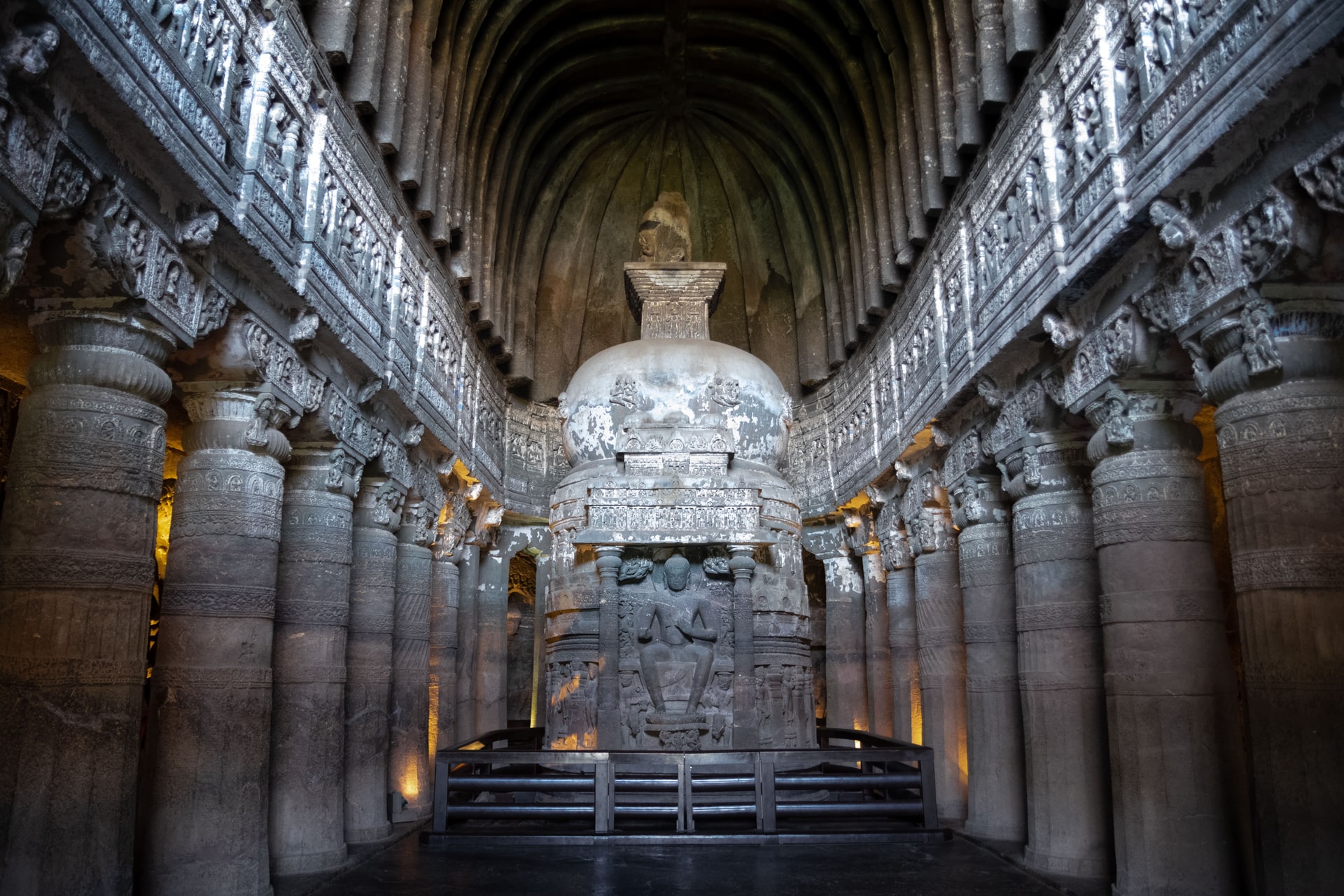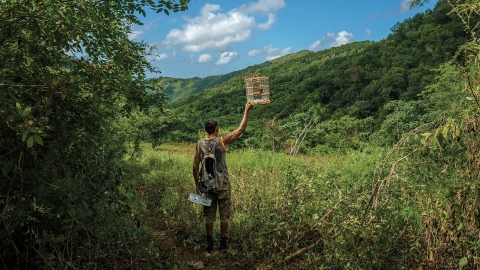Religious treasure in the middle of the highland forest
When typing the keyword “Ajanta” on Google, the first result returned is: “The Ajanta cave system is a complex of Buddhist rock-cut caves, dating from the 2nd century BC to 480 AD, located in Aurangabad district, Maharashtra state, India”.
However, in 1819, before the Internet and when people could only communicate by mail, no one knew about the existence of the Ajanta caves. That year, a group of British men went hunting along a horseshoe-shaped cliff above the Waghora River in central India. Instead of finding wild animals as expected, they stumbled upon a series of man-made caves carved halfway up the cliff. More surprisingly, within that impressive beauty was a treasure trove of ancient religious art.
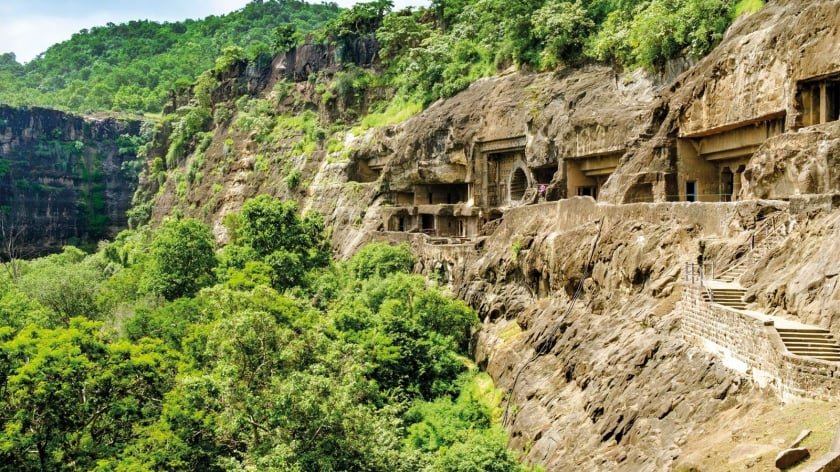
Photo: Album/Robert Harding/Alex Robinson
In the caves and on the walls of the caves are large frescoes, sculptures considered masterpieces of Indian Buddhist art, temples (stupas), prayer rooms, steles... Densely on the domes of the cave pagodas are paintings painted in red, green, blue on marble backgrounds; they vividly depict Buddhist legends, stories of the Buddha's previous lives. In cave pagoda No. 19, there is a sculpture of a standing Buddha wearing a kasaya, considered the oldest model of a standing Buddha statue. Besides the masterpieces imbued with early Buddhist colors, in these caves there are also frescoes and stone sculptures depicting the social life and creative achievements of classical India under the Gupta dynasty.
Upon further exploration and study, it was found that most of the Ajanta caves were structured like the prayer halls (chaityas) and viharas of ancient temples. At the end of the prayer spaces, there were still Buddha images; the living rooms were located along the outer corridors, with nothing else in them except a single stone bed. Judging by the number of them, at some point in the past, these caves were home to at least hundreds of monks and ascetics.

A reclining Buddha statue carved in the late 5th or early 6th century, inside Cave 26. (Photo: Mahaux Photography/Getty)
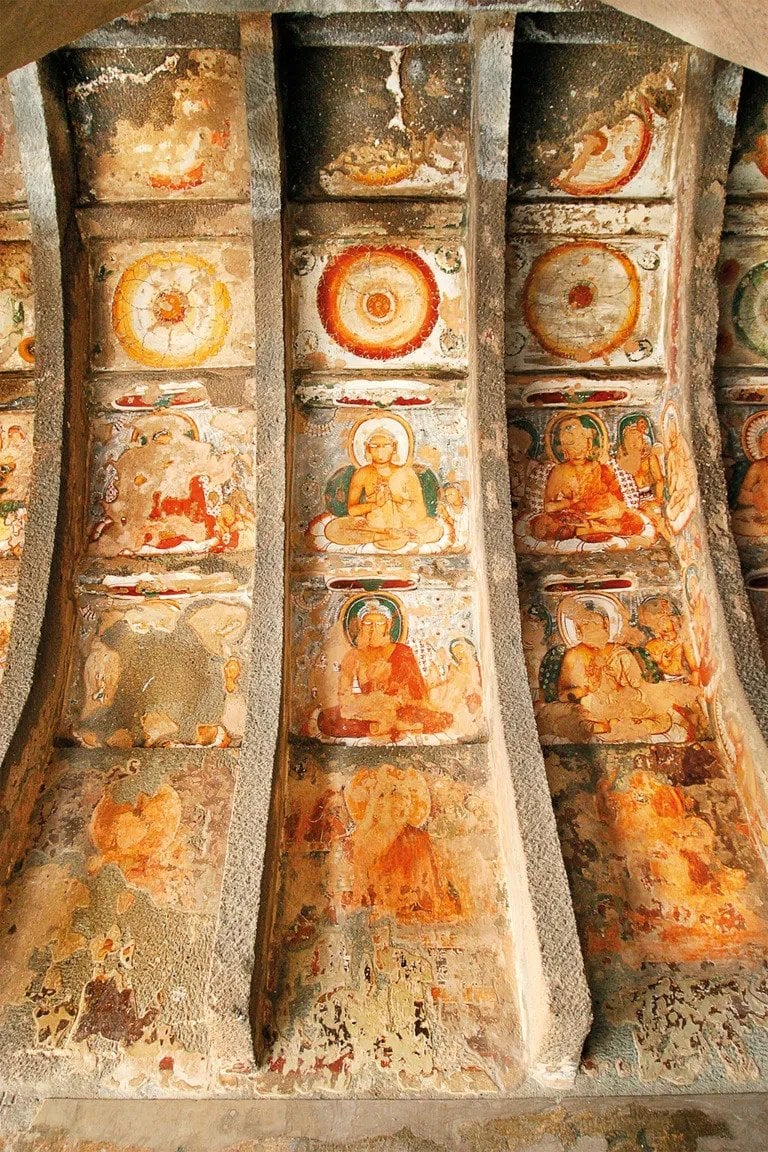
Frescoes of Buddhas and Bodhisattvas decorate the ceiling of Cave 10, one of the oldest caves at Ajanta. (Photo: Maurice Joseph/Alamy)

A life-sized rock painting of Padmasambhava, located in Cave 1. (Photo: Benoy Behl)
Most of the architectural spaces are solemn and reverent, but the walls are the opposite – they are designed to enlighten and inspire, they are covered with colorful paintings, telling fascinating stories from the past: the Buddha's birth and his journey to enlightenment, Bodhisattvas, princes, princesses, merchants, beggars, musicians, servants, lovers, soldiers and saints. Elephants, monkeys, buffalo, geese, horses, and even ants are present, joining the humans in the paintings. Trees bloom, lotus buds open, and vines twist and reach far and wide.
These paintings, painted in the 5th century style, depict classic Buddhist illustrations that are believed to awaken devotion and open the spiritual path visually. To most visitors today, the ancient stories and teachings may seem too mystical and esoteric, but there is one thing that remains true about the paintings that cover the cave walls here: they still have an ancient appeal that is difficult to explain.
Ancient history
Hidden in the wild jungles of the Deccan plateau, for about 14 centuries, the Ajanta cave complex was known only to bats and the local tribes living in the area. For those 1,400 years, this place was forgotten from the rest of the world. So how did these majestic caves form in the first place? Why did ancient wise men choose this place as a place to practice and attain enlightenment? And for what reason were the Buddhist masterpieces they respectfully created buried in the flow of time?
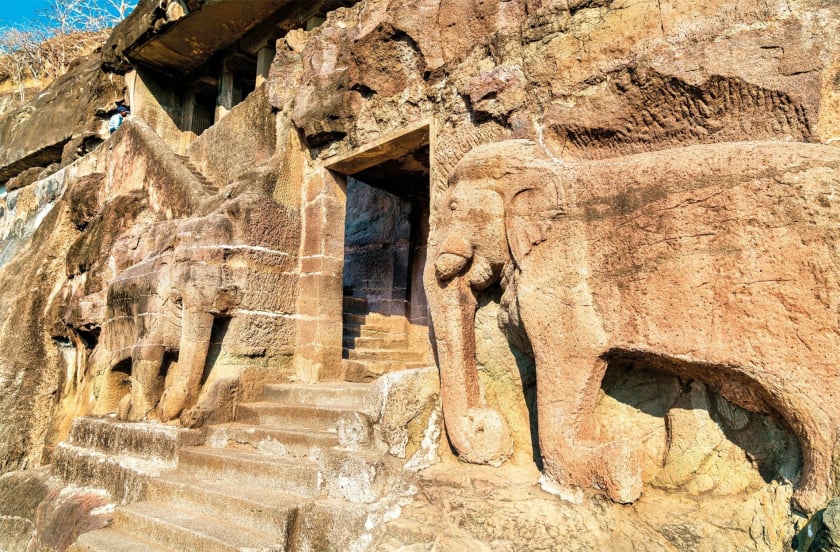
A pair of stone elephants at the entrance to Cave Temple No. 16 in the Ajanta Caves, carved around the end of the 5th century AD. (Photo: Leonid Andronov/Alamy)
Back around 66 million years ago—a hundred thousand years or so before the Chicxulub impact (the asteroid collision that is thought to have caused the extinction of the dinosaurs), one of the largest volcanic eruptions in history flooded India’s Deccan Plateau with about 560,000 cubic kilometers of lava. When the dust settled and the lava cooled, the entire area was covered in a layer of basalt.
Many of the great dynasties of India were founded on the Deccan plateau itself. The surviving stone tablets and inscriptions here are the best-preserved records of this early period. They mention about 30 caves carved into the dark basalt rock face near the ancient town of Ajanta. They are incredibly majestic, with paintings, columns, and thousands of statues. The images of these caves easily remind one of the Petra Valley in Jordan, or the ancient frescoes of Pompeii. This is the Ajanta cave complex.

Many of the walls of the Ajanta caves are painted with paintings depicting the Buddha’s previous lives. In Cave 1, there is a well-preserved mural depicting an Indian king performing a ritual bath after renouncing worldly life in search of enlightenment. (Photo: Benoy Behl)
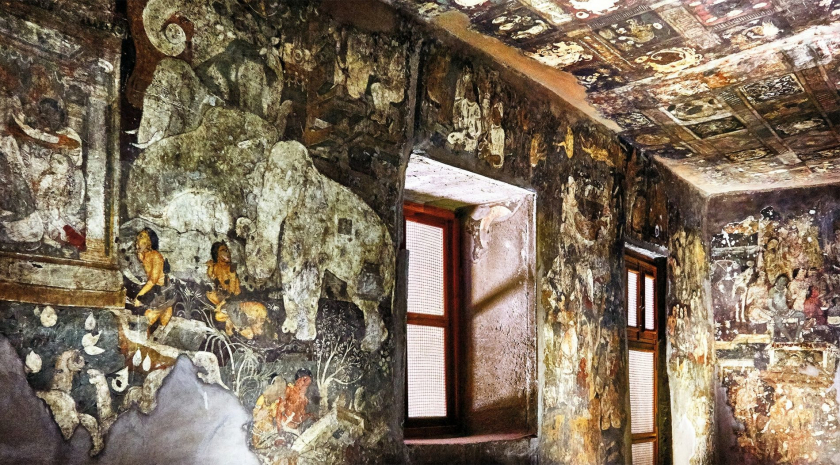
The ceilings and walls of the caves at Ajanta are also covered with frescoes depicting the Jataka Tales - a sutra that recounts the life and past lives of the Buddha, his disciples and opponents in those past lives, and how karma from previous lives plays a role in this life. (Photo: Mahaux Photograophy/Getty)
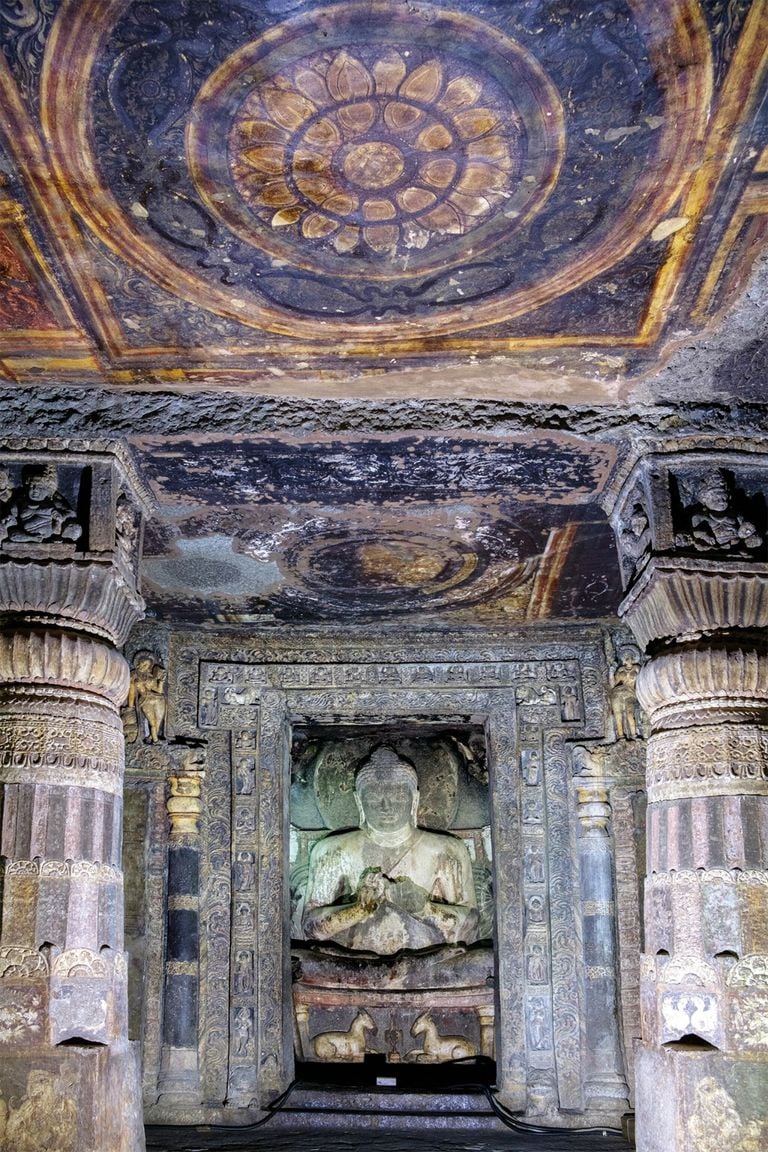
Photo: Robert Harding Picture Library
The opulence of the caves testifies to royal patronage. Some of the cave temples date from the 2nd and 1st centuries BC, but most of the stonework was carved during the reign of King Harishena, the last ruler of the Vakataka dynasty in the mid-5th century AD. The Ajanta caves were a thriving religious and artistic center, a holy place for monks, and are considered Harishena's greatest legacy.
After the Vakataka and Gupta dynasties collapsed, by the 7th century, the temples began to empty, the caves were abandoned, and the masterpieces of the Ajanta paintings were forgotten. Time gradually took Buddhism away from India, from the very place where it had been born. Finally, by the end of the 13th century, most of the Buddhist holy sites in the country were destroyed or abandoned after wars with Muslim armies.
Sacred pilgrimage tourist site
Today, after many efforts of research and preservation, people have discovered the historical, artistic, humanistic values and the far-reaching influences of the art treasures at the Ajanta cave complex. Although many frescoes have been distorted by time and human interference, most of the works here are still intact.
In 1983, the Ajanta cave complex was recognized as a World Cultural Heritage Site by UNESCO. Local authorities and the Indian government have put in place policies to restore and exploit the pilgrimage tourism potential of the area. Every year, hundreds of thousands of pilgrims - including domestic and international tourists - come to Aurangabad district to admire this great ancient structure.
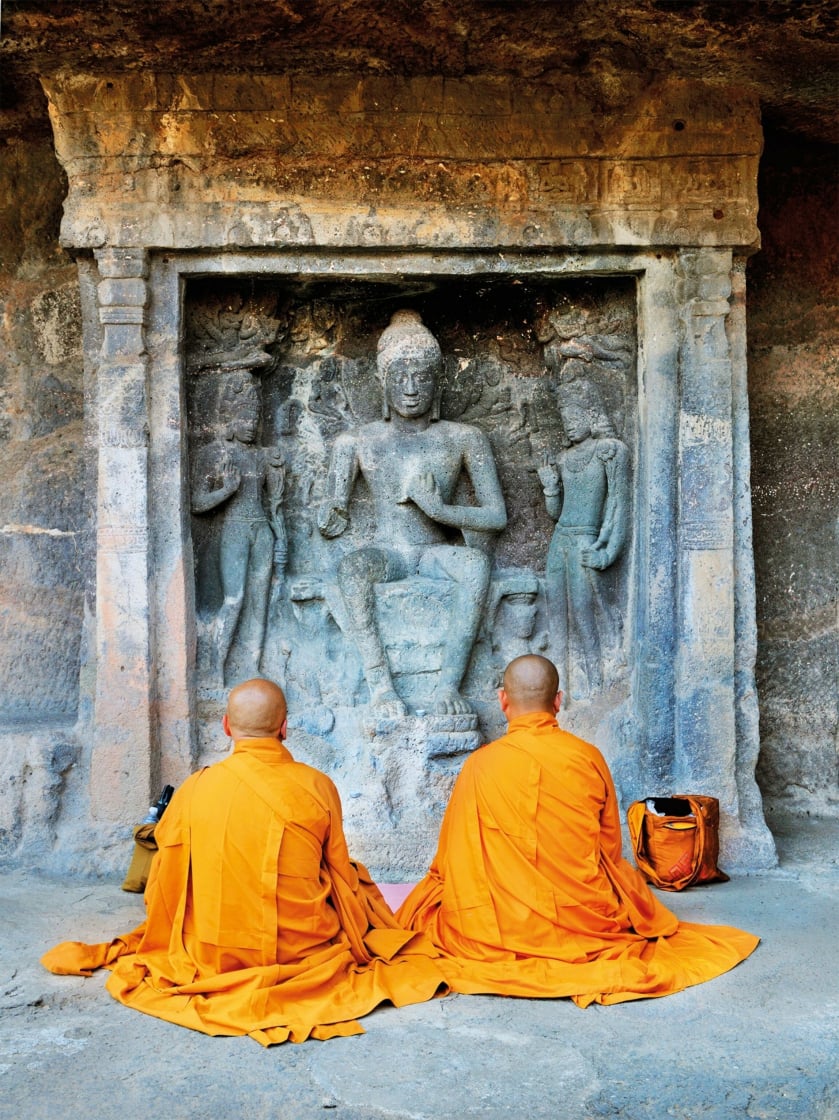
Today, the Ajanta cave complex is one of the most famous Buddhist sites in India, attracting hundreds of thousands of tourists and monks every year. (Photo: Nikreates/Alamy)
Benoy Behl, an Indian photographer and filmmaker who has been documenting caves across the country for decades, remains moved by the sacredness and antiquity of the Ajanta caves.
“We see the divine in ourselves, here,” says Benoy Behl.





